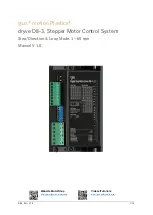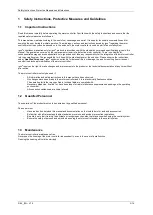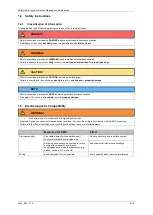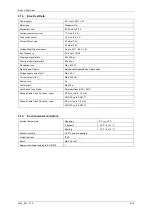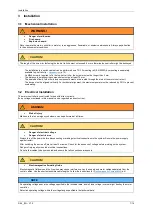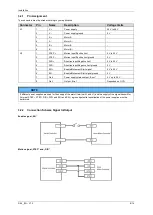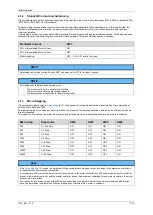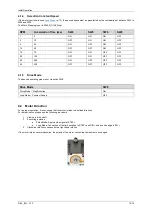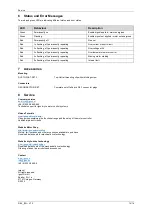
Execution of Movements
D8-3_EN
– V1.0
13/14
5
Execution of Movements
5.1
Pulse Mode
– Step/Direction
To execute a movement in pulse mode, a 5 V to 24 V signal must be permanently applied to the EN+ input.
If a square wave signal is applied to the STEP+ input, a clockwise motor step is executed with each negative signal edge. To
execute a counterclockwise movement, a 5 V to 24 V signal must be applied to DIR+.
A 5 ms delay must be implemented between setting the EN+ input high and emitting a signal to the STEP+ input.
To be able to change the rotation direction, the frequency signal at STEP+ must be dropped to a zero signal (0 V, 0 frequency)
and a 5 V to 24 V signal must be applied to DIR+ at least 5 µs before a frequency signal is output to STEP+ again.
Rotation direction
Signal at STEP+
Signal at DIR+
Clockwise
Frequency signal, 5 V up to 24 V
0 V
Counter-Clockwise
Frequency signal, 5 V up to 24 V
5 V up to 24 V
5.2
Loop Mode
– Constant Limit to Limit Motion
The loop mode requires that limit switches in NC configuration (electronic limit switches: PNP) are used. The positive limit
position switch must be connected to the STEP+ input and the negative to DIR+.
To start the continuous motion sequence, a 5 V to 24 V signal must be applied to input EN+.
After applying the signal, a movement towards the positive limit switch is executed first. If this has been reached, the movement
is stopped and a movement in the opposite direction, towards the negative limit switch, is started.
If the connection to one of the two limit switches is interrupted, 2 states can occur.
1.
Movement in the direction of the interrupted limit switch
If the signal of the limit switch to be reached is interrupted during the movement towards it, a movement in the
opposite direction is started immediately after the signal has disappeared until the opposite limit switch is reached.
Due to the missing signal of the second limit position switch, no subsequent movement will be started at that point.
2.
Movement from the direction of the interrupted limit switch
If the signal of the left limit switch is interrupted, the movement is continued until the target limit switch is reached.
Due to the missing signal of the second limit switch, no subsequent movement is started.
If a movement shall be started again after the basic state of the limit position switches has been restored, the EN+ signal must
pass through a positive edge pass.

